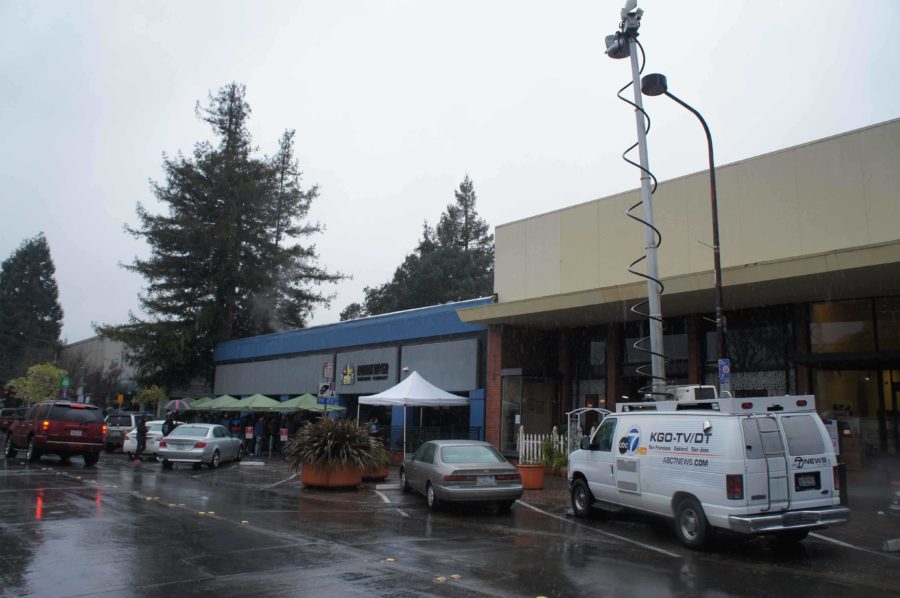Under Santa Rosa’s first real rainfall of the year, clumps of colorful mushrooms slowly sprang up down 4th Street. A crowd of curious onlookers gathered, documenting the sporadic sprouts spreading down to the corner and around it. Then several antennae shot skyward, tilting up their parasols to broadcast far over the canopy of the umbrellas huddled below.
It was a strange sight, but Santa Rosa locals have grown used to the two-week Pliny the Younger season each February, when news crews gather to interview people, from all corners of the globe, waiting in line for a golden glass of Russian River Brewing Company’s coveted Triple-IPA, currently ranked #2 in the world.
Every year, TV news crews from as far away as Sacramento and beyond come to tell the same story about a long line of lingering people. Some are first timers; others ritually make the annual pilgrimage from as far away as Japan or Sweden. Some arrived in a group; others gather here from around the world just to wait in line together.
Last year’s 13,000 visitors for the two-week Pliny the Younger release, covered in depth by Oak Leaf News, brought in over $2.2 million according to a survey conducted by the Sonoma County Economic Development Board. Last November the EDB’s first-ever conference on craft beer, cider and distilled spirits outlined the $200 million liquid gold rush here in the craft beer movement’s birthplace.
New Albion Brewery opened in Sonoma in 1976, built from used dairy equipment by brewing legend Jack McAuliffe, became the country’s first microbrewery. While New Albion stayed open only a couple years, their “Eureka!” was the shot heard ’round the world in the craft beer revolution. Even multinational brewing conglomerates have started taking notice.
“If the tail can was the dog that hard, it’s not the tail anymore,” said Lagunitas Brewing Company owner Tom Magee, keynote speaker at the EDB conference. Lagunitas accounts for about 70 percent of Sonoma County’s craft beer sales, and opening their new brewery in Chicago will quadruple their production capacity.
Sonoma County’s craft breweries benefit from the county’s existing wine tourism industry – and so can students at Santa Rosa Junior College. SRJC’s Wine Studies and Hospitality programs are already well in-place, and could soon expand to include beer.
After the EDB conference, Lagunitas marketing direct Ron Lindenbusch said, “If you want to be in the marketing end of things, SRJC has a great culinary program to be able to take the whole ‘beer & food’ thing to a whole other place.” Lindenbusch said students interested in working for a brewery should take SRJC’s wine-related courses and “try to put a ‘beer’ angle to it, and you’ve got something that has a dual purpose in the consumer’s mind.”
Most craft brewers started home brewing, a hobby whose history was also written in Sonoma County. Byron Burch wrote and published “Brewing Quality Beers” before President Jimmy Carter officially legalized home brewing in 1978. Burch’s book comes with every home brewing kit sold at The Beverage People, which Burch helped open over 30 years ago to supply local beer, wine and cheese makers. Some wit described a brewer as a janitor who knows how to cook, and Burch’s guidebook is a great place to try a taste.
Whether it’s the water or the weather, Sonoma County grows breweries with the same magic it grows hops and grapevines.


